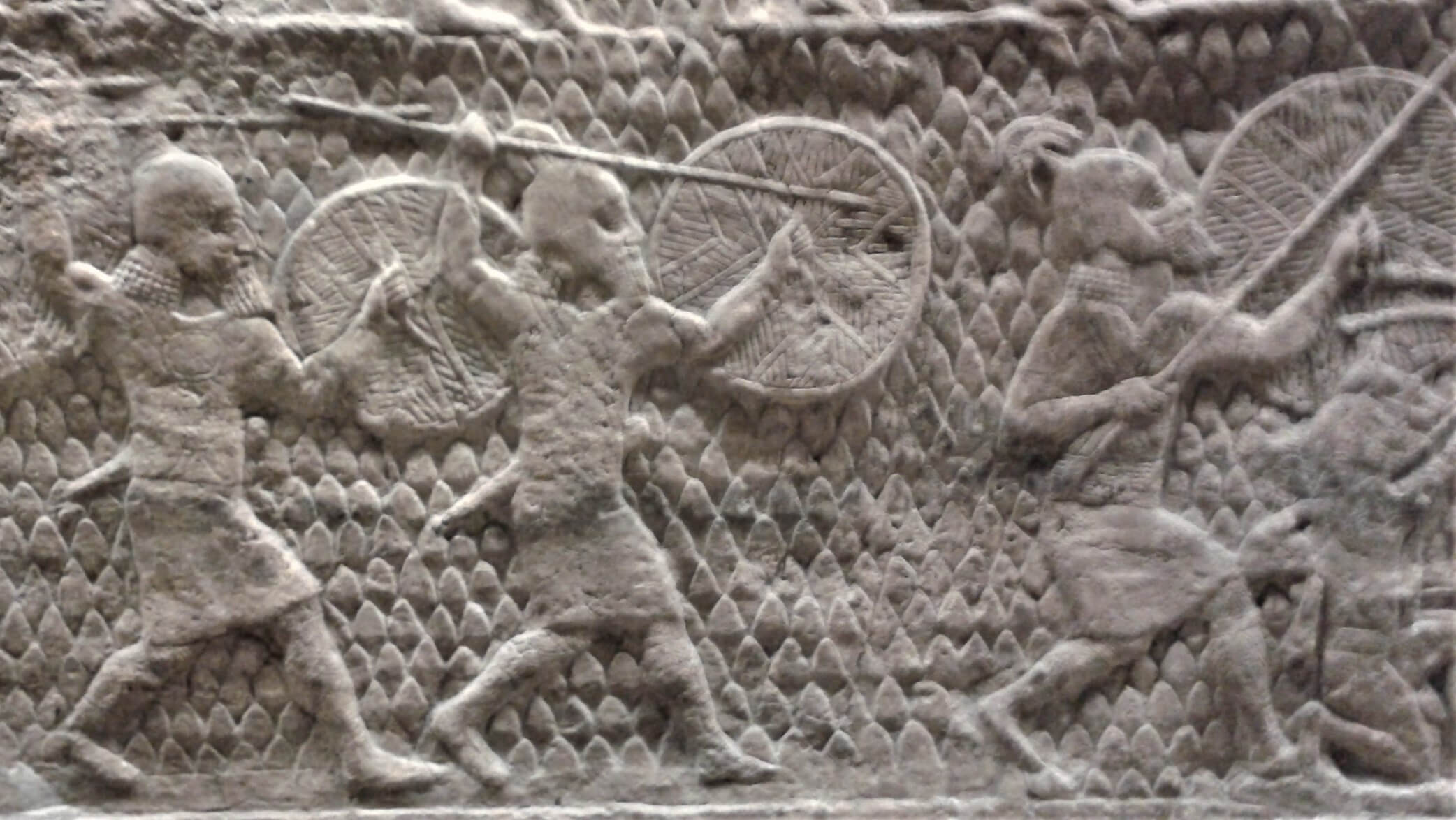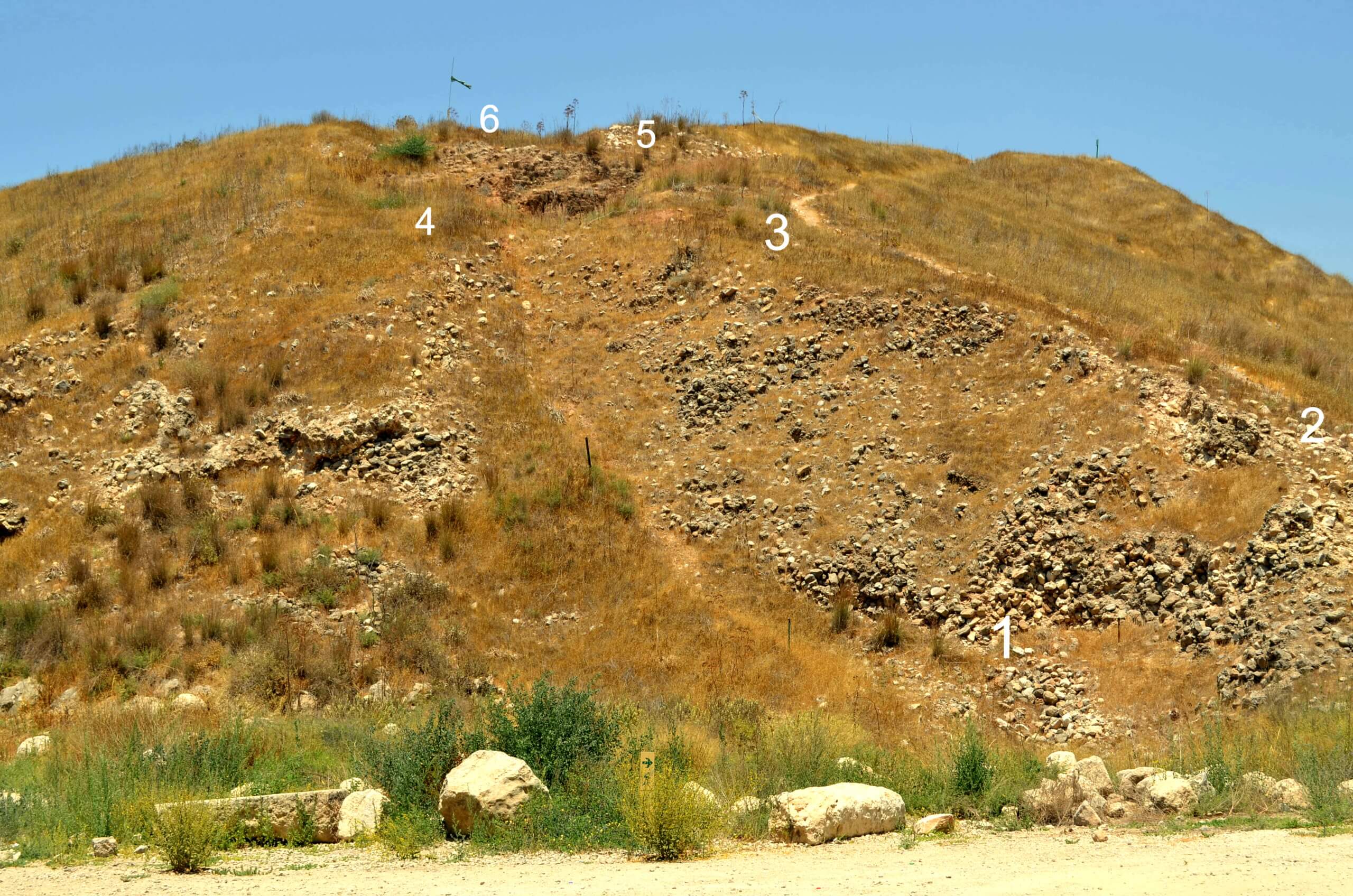The study proves the amazing power, size, strength and skills of the Assyrian army at that time, and the truth of biblical quotations concerning the words of the prophet Isaiah who lived at that time

A new study recently published in the Oxford Journal of Archaeology, the archeology journal of the University of Oxford, under the title "Construction of the Assyrian siege ramp at Lakish: texts, iconography, archeology and digital mapping", examined in depth the manner in which the Assyrian siege rampart was created and erected at Tel Lakish - The oldest siege battery in the world and the only one known in the ancient Near East, which has survived well to this day. In this study, the topography of the place where the ramp was first discovered decades ago was examined - and the researchers used digital documentation methods to analyze the local topography, and the volume of raw materials that were required to build the embankment.
An extensive excavation delegation from the Institute of Archeology of the Hebrew University in Jerusalem, led by Prof. Yossi Garfinkel and Dr. Madeleine Momtsoglu, and Prof. John Carroll and Dr. Michael Pitlik from the University of Oakland, in Michigan, USA, participated in the study. The site was previously extensively excavated by several expeditions. The first two expeditions excavated in the 1932s and 1974s. The first documentation of the ramp, which survived from the initial excavation works in the field, is a photograph from the end of 1994 (photo attached). In the photograph you can see a steep hill, located near the main mound, near the southwest corner of the site. However, at that time the ramp was not recognized as such by the excavators, and as a result excavation work was done in the area, which did not necessarily contribute to the preservation of the embankment. Later, a third expedition led by Prof. David Osishkin from Tel Aviv University excavated the site between 1973 and 2013. During a visit to the excavations in 2017, the Chief of Staff and archaeologist Prof. Yigal Yedin suggested that the piles of stones in the southwest corner of the site might be the remains of the Assyrian siege ramp. The Usishkin excavations did prove this. The fourth expedition led by Prof. Yossi Garfinkel from the Hebrew University excavated in Lakish between XNUMX and XNUMX, and re-examined various aspects that shed light on the construction of the military battery.

The Assyrian Empire took over most of the Near East and Egypt during the ninth, eighth and seventh centuries BC. She conquered the kingdom of Israel, and destroyed Samaria in 722 BC. The Assyrian army developed effective military technologies and tactics, and was able to win any open battle or capture any fortified city. In 701 BC, King Sennacherib of Assyria set out with a large army to suppress the rebellion that broke out in the Kingdom of Judah during the reign of King Hezekiah. The most prominent event in this campaign was the conquest of the city of Lachish. Lachish was a flourishing Canaanite city in the second millennium BC, and the second most important city in the Kingdom of Judah from the end of the tenth to the beginning of the sixth century BC. The siege ramp built on the site by the Assyrians is the only physical example left in the area that teaches about the form of occupation of the city in those days.
There is information about the event of the conquest from four different sources - in several books in the biblical tradition (Kings XNUMX, chapters XNUMX-XNUMX, Chronicles chapter XNUMX, Isaiah XNUMX-XNUMX), in the writings of Sennacherib, in a large relief that decorated the throne room in Sennacherib's palace in the city of Nineveh, and the studies in Lachish that were conducted by different delegations.
The Assyrian fighting method was to attach a siege engine to the city wall, in which hung a large wooden beam, called an 'eil niguh'. The ramming stag would swing and hit the city wall again and again, until the wall crumbled and an opening was created that allowed the Assyrian army to break into the city. Since the wall in Lachish was at the top of a high hill, the Assyrians built a diagonal rampart, which led from the base of the hill to the wall at its top. The construction operation, therefore, had to be calculated and strategic and above all precise and professional.
The research question was how that embankment was built and where the raw materials needed for its construction were taken. The conclusions of the research indicate that the battery was built from the far end, and it got higher and higher as it got closer to the city wall. The battery was built with about three million stones, the total weight of which reached about 20,000 tons. Average weight for one stone was about 6.5 kilos (hence it could easily be carried by hand, to build the ramp). The stones were cut from a nearby hill, creating a steep cliff that is still visible today. A line of people stood from the edge of the quarry and on top of the embankment, and stones were moved from hand to hand and thrown towards the city. According to the researchers' estimates, about 160,000 stones were moved in this way every day. Large shields were placed at the edge of the battery, which were moved forward as the work progressed. Thus the builders of the battery were protected from partitions and slingshots fired from the direction of the city itself.
The Assyrian army could build such a battery for about three weeks with a concentrated effort of 24 hours a day. "Time was the main concern of the Assyrian army. Hundreds of laborers worked day and night to carve the stones and to carry the stones, perhaps two or three shifts each day. The manpower was probably provided by prisoners of war and forced labor of the local population," the article states.
Additional important information was obtained in the field regarding the paving of the upper surface of the ramp. The pavement consisted of three rows of elongated objects. "It seems to us that these are wooden boards placed side by side, to create a convenient surface for pushing the heavy siege machines up the ramp, from the ground level at the foot of the mound to the base of the city wall," the article further explains. Furthermore, an iron chain was found on the siege ramp in Lakish. Such a chain has never been found in Lachish or in any other city in the ancient Kingdom of Judah. Therefore, according to the researchers, it is likely that the iron chain found on the ramp originates from the Assyrian ram. This find indicates that the ramming elk swung back and forth while tied with iron chains.
In conclusion, the study interprets two biblical passages, which appear in the words of the prophet Isaiah who lived at that time. In chapter 24, verse XNUMX, the strength of the Assyrian army is described: "There is no fainting and no failure in it, it will neither slumber nor sleep, nor will the region of its loins be opened, nor will the lace of its shoes be undone." Where did the Assyrian army operate XNUMX hours a day if not while building a siege battery and attacking a city? Another prophecy of Isaiah is mentioned in the book of Kings XNUMX, chapter XNUMX, verse XNUMX: "Therefore thus said the Lord to the king of Assyria, He shall not come to this city, nor shoot an arrow there, nor shall a shield come before it, nor shall he pour mud upon it." In other words, this verse describes what will happen to the city of Jerusalem, and from this we can learn the Assyrian method of attack - shooting arrows at the city wall to prevent the besiegers from harming the people building the rampart, advancing a shield on the top of the rampart that is getting closer to the city wall, and throwing stones from the far end of The battery - as the researchers concluded in the current study.

8 תגובות
Amazing and very interesting.
Thanks for the information
Amazing and very interesting
Wow very interesting
how stupid you are
I read the article, bless you!
Interested in continuing to be updated. The news that deals with the knowledge of the country.
Peace and go
Guide 2282
Thanks!
very interesting
very interesting. Thanks
I will write like this until the end.
No reasonable person can read this article. I scrolled to the end, but Hot was so far that I stopped in the middle. Don't publish and give space to "exhausting" articles, for the information of the "Yaden", it's nice that you know, but if you want to be read as well, be brief and condense to the main point only.